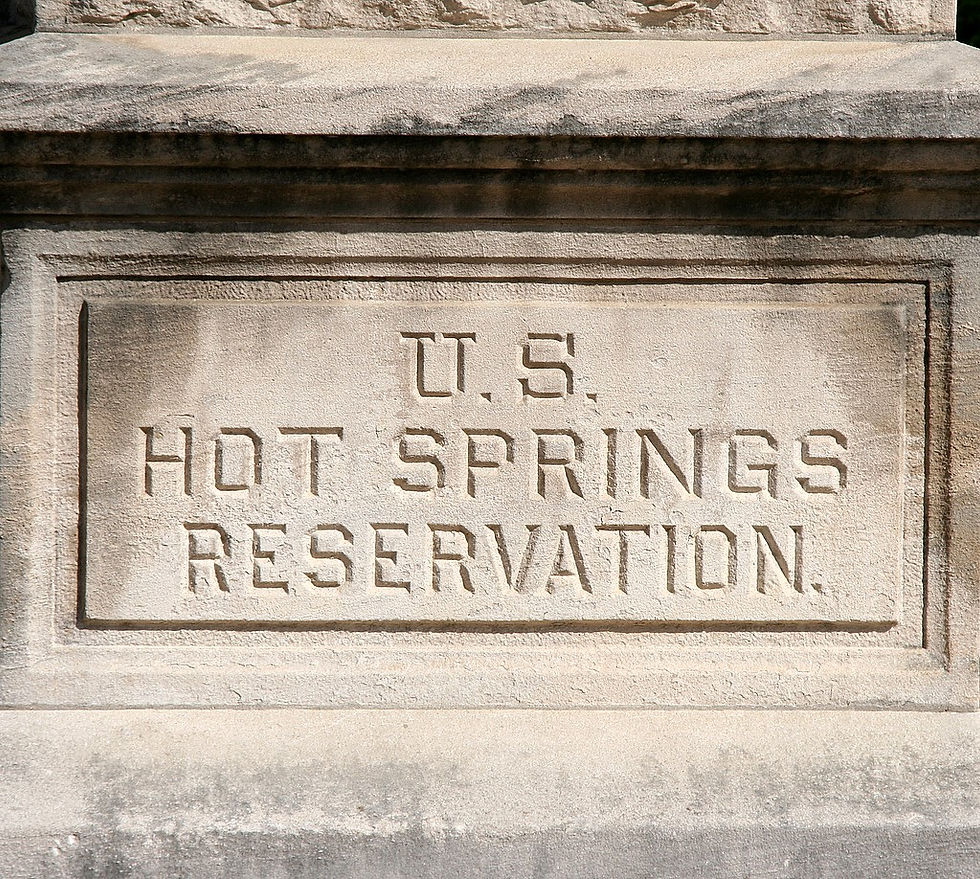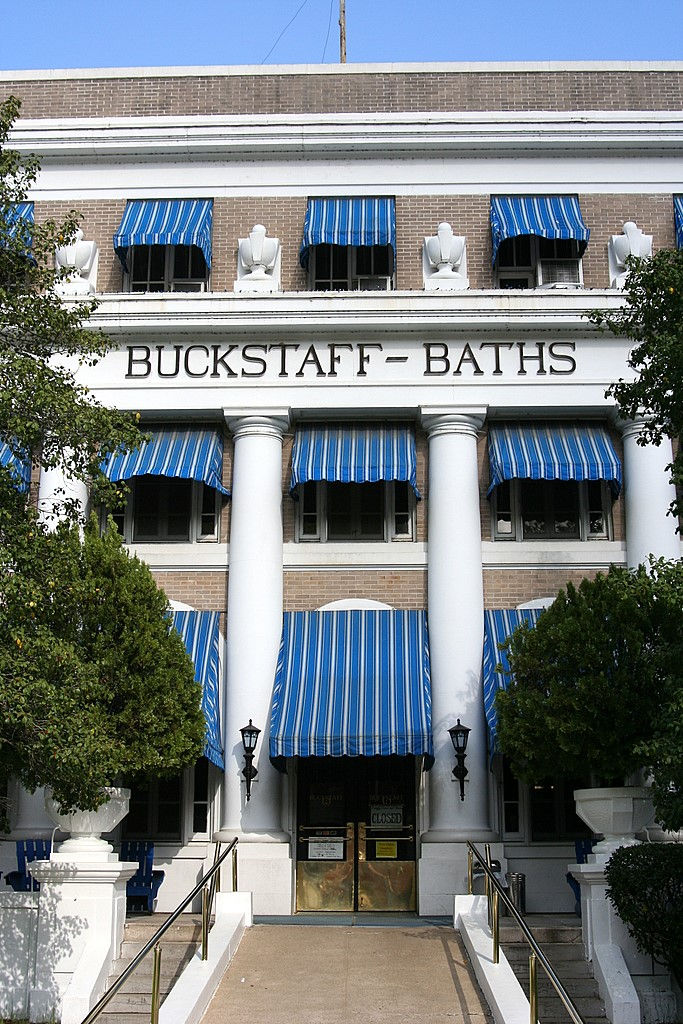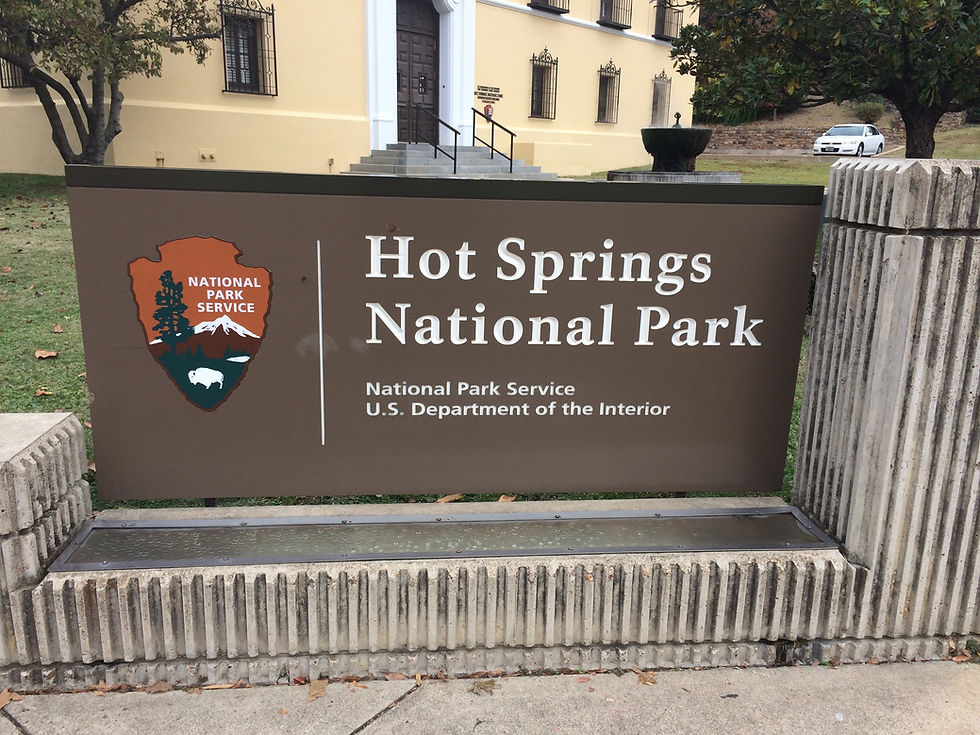Hot Springs National Park
Verse: 2 Kings 5:1–19
Fun Fact: Hot Springs was the first area in the United States to be set aside for its natural features.
Favorite Hike: Take a break from hiking and enjoy a bath instead.
The history of Hot Springs National Park goes back centuries. Long before the national park designation, Native Americans introduced explorers to the “Valley of the Vapors.”
In the early 1800s, following the Louisiana purchase, it became known as a place to visit for health seekers, referred to as the “American Spa.” Bathhouses were established, and people came from all over to soak in the therapeutic mineral waters, believing in their power to heal many ailments and promote longevity.

It was first set aside in 1832 to protect the natural hot springs, then known as Hot Spring Reservation, before the NPS was established. It was later designed as a national park in 1921.
Around this same time, the bathhouses were renovated to include marble walls, state of the art gymnasiums, and stained-glass windows. The bathhouses, which are still standing today and open to visitors, set the bar for spa luxury. In the 1940s, as many as 24 bathhouses were open for visitors.
The park has 47 hot springs coming from Hot Springs Mountain that average 143 degrees Fahrenheit. It is the only unit of the national park system with a mandate to give away its primary natural resource to the general public in an unending and unaltered state. There are fountains around the park where you can drink or collect the spring water.
While there aren’t any hot springs or pools you can directly sit in, you can still tour Bathhouse Row, the largest collection of 20th century bathhouses in the US. The Forydce, the largest of the bathhouses, now serves as a museum and the National Park visitors center.

You can also visit places like Buckstaff Baths to get the traditional bath experience. It is the only operational bathhouse from the original eight on the row, but there are others in town, such as Quapaw Bathhouse and Arlington Hotel, that offer spa experiences.
We see water used as a source of healing within the Bible as well. You may recall the story of Naaman in 2 Kings 5.
Naaman was the commander of the Syrian army, a position of great power. We are told he was great and honorable, a man of valor and highly regarded (v. 1), but we are also told he was a leper.
A young slave girl who worked for Naaman’s wife told of the prophet in Samaria who could heal Naaman. So, with the blessing of the king, a royal letter to the king of Israel, and a small fortune to serve as a gift or payment, Naaman traveled to Israel where he met Elisha.
Elisha sends a messenger telling him to “Go and wash in the Jordan seven times, and your flesh shall be restored, and you shall be clean” (v. 10).
Naaman was furious. Because of his status, he expected more attention, but Elisha didn’t even come out of the house to meet him. Naaman expected Elisha to come, lay his hands on his leprous skin, and call on God to instantly heal him.
Naaman was also not thrilled with the choice of the Jordan river. It was not the cleanest or nicest river. There were others that were much better. Why the Jordan?
Thankfully, his servants gave him some perspective:
But his servants came near and said to him, “My father, it is a great word the prophet has spoken to you; will you not do it? Has he actually said to you, ‘Wash, and be clean’?” So he went down and dipped himself seven times in the Jordan, according to the word of the man of God, and his flesh was restored like the flesh of a little child, and he was clean. (vv. 13–14)
After Naaman was healed, he went back to Elisha and said, “I know that there is no God in all the earth but in Israel” (v. 15). He tried to offer Elisha money, but he declined.
There is a lot we can learn from this story. It is not a story about the healing powers of water; it is about the healing powers of our Lord.
We see throughout Scripture that leprosy is associated with sin, and there was a process of healing and cleansing that must take place before a leper was able to come back into the community.
This is the same for the sin in our lives. The Lord has told us how to be healed, and it doesn’t require us coming with money or status but with a humble heart.
Don’t miss the part in this story that the one who knew where to be healed was the young slave girl. Don’t miss the part where the servants tell Naaman, “A great word was spoken to you…will you not do it?”
The Lord has told us through His Word what it takes to be healed and often reminds us of it in humble and unexpected ways.
Naaman goes a leper and leaves with an understanding that there is no other God but the true God with a thankful heart and a commitment to worship the Lord.
I pray that as you visit Hot Springs National Park, you examine how the Lord has healed you. Remember Naaman and his transformation. Let that serve as a reminder and encouragement to you.
He has told you, O man, what is good;
and what does the LORD require of you
but to do justice, and to love kindness,
and to walk humbly with your God?
Micah 6:8


Comments